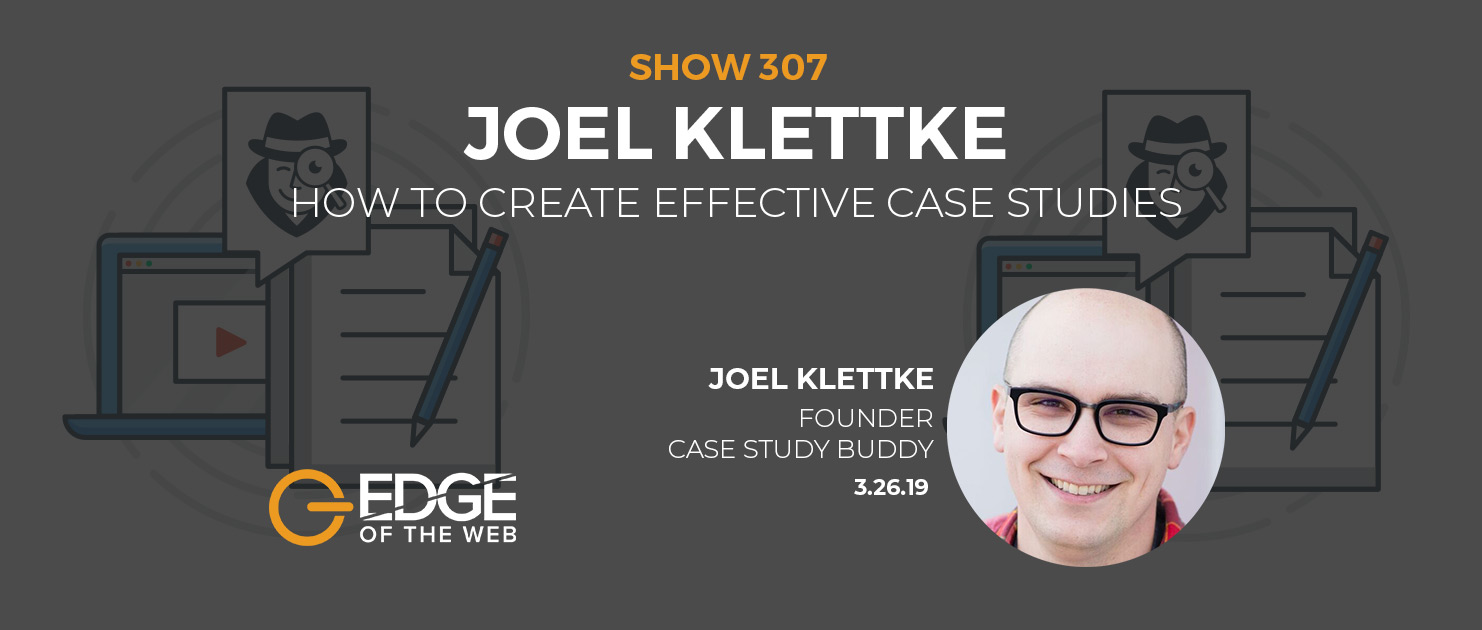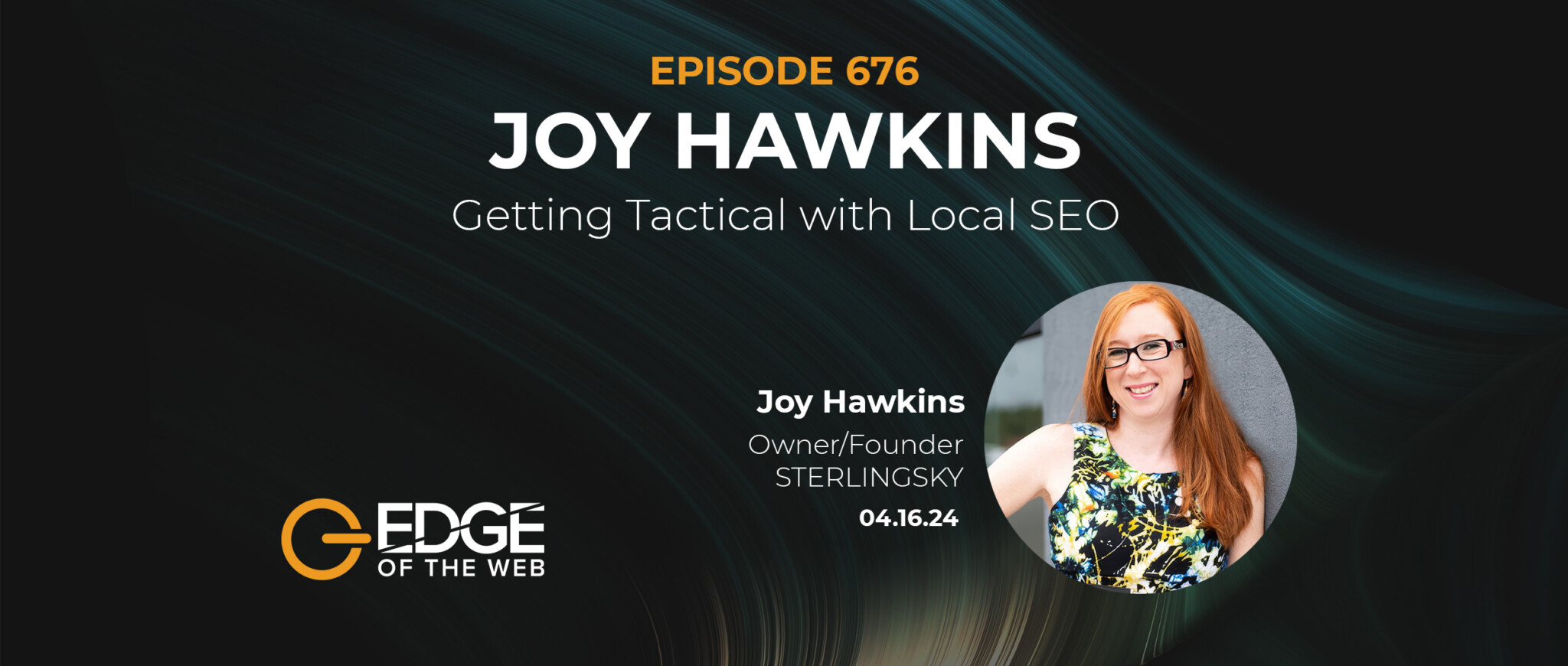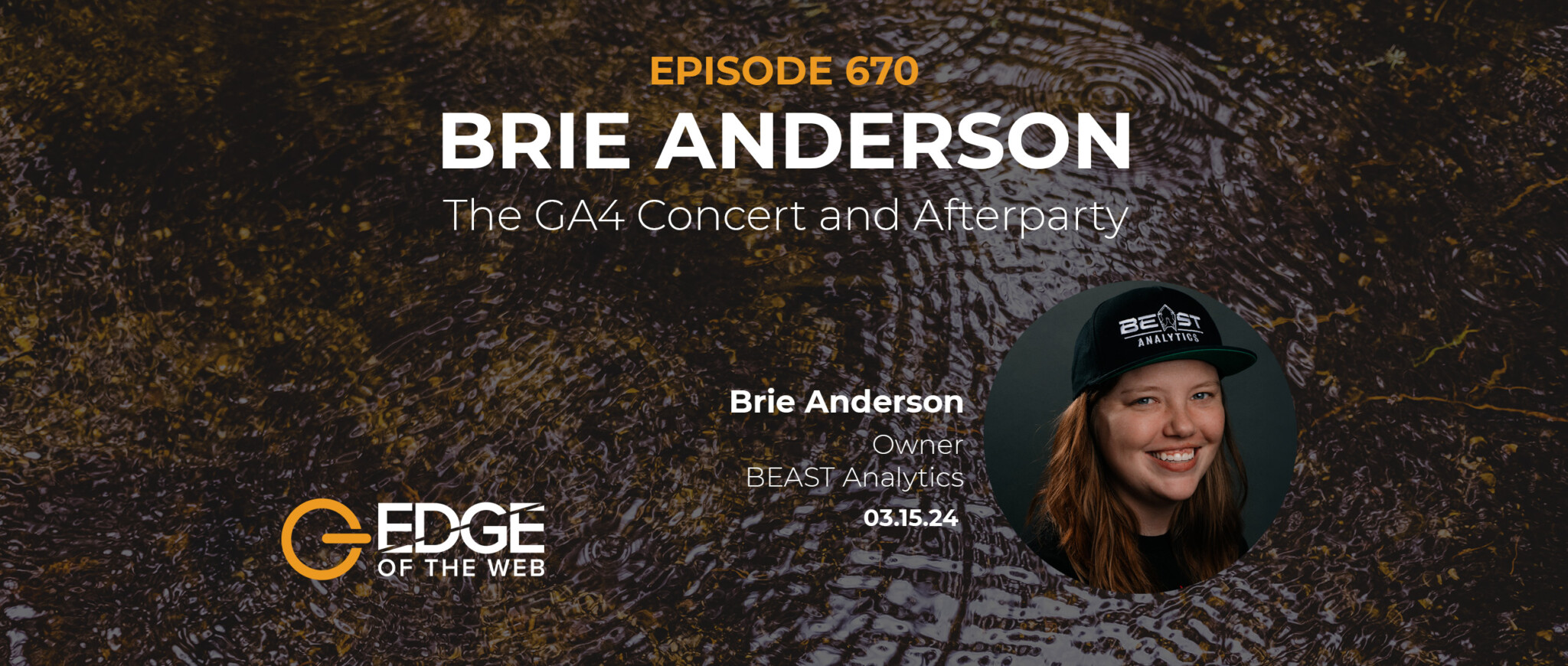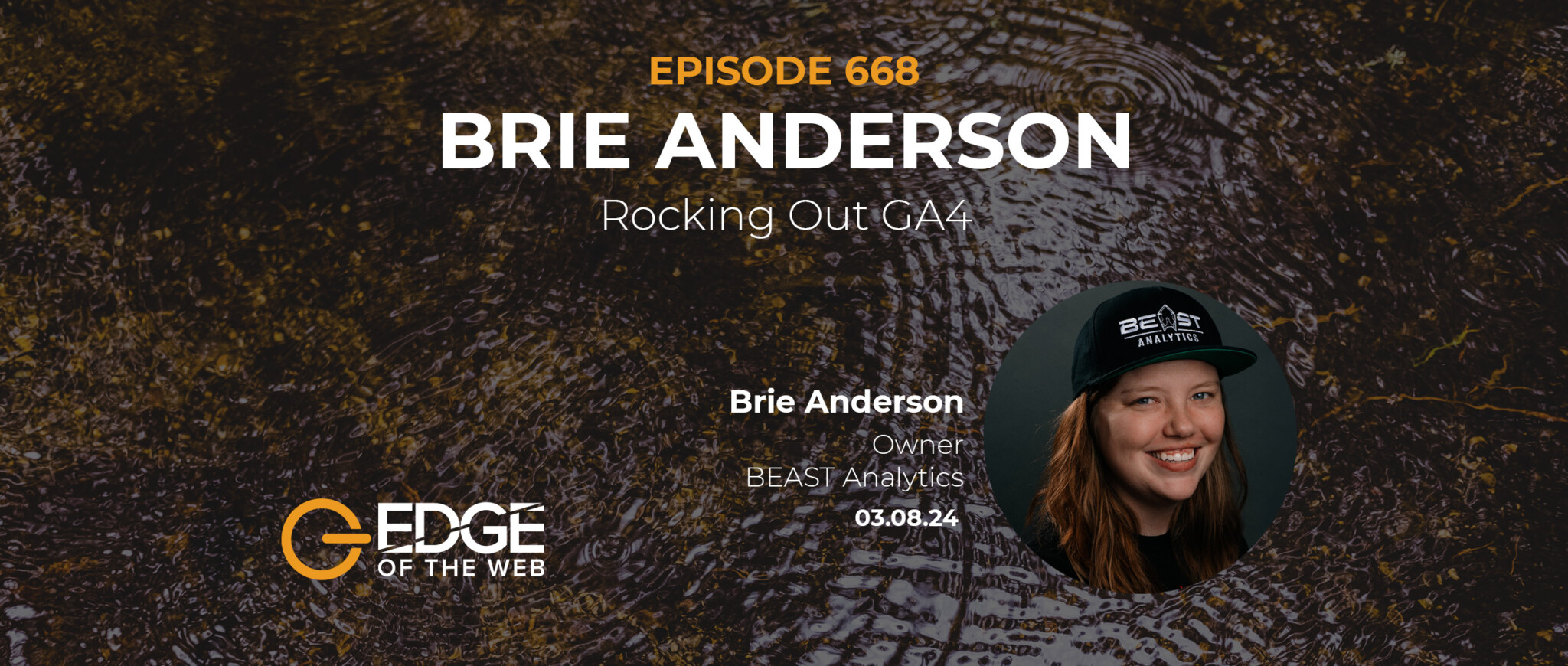Case studies are pure marketing gold when done right, according to special guest Joel Klettke, founder of Case Study Buddy. When he sat down with Site Strategics CEO Erin Sparks and Digital Media Director Tom Brodbeck for Episode 307 of the award-winning EDGE of the Web podcast, he explained what goes into the making of great studies. Here’s what we learned:
Begin by Defining the Objectives of Case Studies
It begins by very clearly defining what kinds of stories your company needs to tell. These are the objectives of the case study. Maybe it’s to promote a new or improved product or service, maybe it’s to reach people who are in particular roles in prospective customer companies, maybe you’re trying to grow your market share in a particular industry. You have to know what kind of story you want to tell. You won’t know who you need to talk to until you define your goals for the case study. In other words, the most powerful case studies are the ones that align with your company’s business goals.
By way of example, think about a digital marketing agency. They know they’ve got really incredible customer service, but every agency makes that claim on their website, right? But with a case study, you can craft a unique, compelling story that tells leads about the success of your customer service. By making that your objective, then you know you’ve got to find and talk to the customers for whom you have provided the very best customer service experiences. Clearly defining your objectives is about putting some meaningful boundaries on the type of story you want to tell
Conduct Great Interviews for Case Studies
An important point to make is that doing great case studies will most likely involve getting some professional help. It’s hard to get the right kind of information needed for a killer case study if the company is interviewing the customer. It’s hard for that process to be objective. It’s like saying, “Hey, could you just sit there across from me and sing our company’s praises for a while?” It just doesn’t work. You won’t get what you need for a quality case study. Using a third party for that interviewing piece of the puzzle is essential, and totally worth it because you’ll learn all kinds of things about your own company you didn’t know before. And yes, sometimes what you learn isn’t good.
In the interviews, the two main things to keep in mind is that 1) it’s all about listening, probing and exploring, and 2) you’ve got to get the interviewee to be a storyteller. Don’t ask for opinions, ask for experiences. So, to capture information about where the customer was at in the “before” state of affairs, questions like “What was going on in your business that sent you looking for a solution like ours or like X company?” or “When did you realize the old way of doing things Jennifer Havice. With those kinds of questions, they’ll open right up and tell rich stories.
The role of the interviewer in terms of probing is to constantly be asking why, why why – just like little kids do all time. If the customer is talking about their experience of the solution, look for places to ask “Why was that important to you?” and “Why did you value that?” The interviewee and the interviewer can both be nervous, and the why questions give second chances to rephrase answers, or include information that they forgot, and so on. Another good one for this is “What surprised you about working with us?” And also something like, “Where could we have done better for you?” or “What could we have changed?” It’s important to keep in mind that case studies are not only about what went right. Use them to learn about areas to improve as well. If you had to pivot your strategy mid-way because something wasn’t working, then that’s immediately a more compelling story, and more believable too than one where everything was perfect.
The other key part of the interview has to be about the results the customer saw, but again you have to make it a story. If the customer only says how happy they were to see a 50% lift, that’s not very helpful because it’s not a story even though it’s impressive. What did it mean? If you can find out that it allowed the customer to hire more staff or to expand into a new market, then you’ve got a compelling story. This is how you turn an otherwise “dead metric” into a compelling story.
When third-party interviewing reveals negative information, you have to make sure the company hears it. Provide transcripts or recordings and flag the negative content. Capturing a great story is the goal, but it doesn’t always work out that way.
What kinds of questions should be avoided in these interviews? Obviously, yes/no questions don’t lead to great stories, so avoid those at all cost, or any other question that could be answered with a single or very few words. You want to ask questions that naturally lead to elaboration. Don’t ask surprise questions that require data they may not have during the interview. If you’re going to ask about a specific metric, the interviewee needs to know about it ahead of time. It’s okay and even essential to have them do a little homework before an interview. It also gives them an opportunity to say they’re not comfortable sharing about this or that specific topic.
Using Case Studies Across the Marketing Funnel
The invaluable information you get from the interviews is hearing the customer talk about their experience openly and honestly, and in their own words. The value of this can then be applied outside the context of case studies. It can inform the copy you write throughout all aspects of marketing. After all, it’s always better to use language that customers are already using to talk about your company.
If you go through the process of creating killer case studies only to relegate them to some sad little “resources” section of your website so you can say you have case studies, then you’re totally missing out on leveraging them into better marketing content all across the funnel. You can use case studies to attract leads. You can use them to move leads towards making a purchase. You can use them for upselling. You can use them to win back dead leads. The ways they can be used are literally endless.
Good Case Studies Will be Devoured
People always want to know what the ideal length of a case study should be. The question gets asked a lot because everyone assumes no one wants to read a lengthy piece. That is a myth. People will keep reading as long as what they’re reading is good and interests them. DocSend did a massive study on reading completion. Can you guess what is the highest-performing kind of content by orders of magnitude? Case studies! People are way more likely to read more of a case study than an eBook, blog post or any other kind of content you can think of. But yes, the length factor does eventually come into play, even with case studies. Less than five pages is good. Beyond that, people do drop off. But keep in mind that’s five well-designed pages (not just dense text). This page count is specifically for case studies. Other kinds of content will have their own ideal length limits. And ideal length also varies by use case. You might have a very short version of a case study to draw in leads, and then give them the opportunity to see the full case study if they want more. Cold outreach, like emails, need to be on the shorter side. The length has to fit the specific use.
Cap Your Case Study with a Call to Action, and Don’t Bury the Lead!
One of the big mistakes often made with case studies is failing to include a clear call-to-action at the end. The case study might tell this really compelling story and then it just ends, which makes no sense. Include a good CTA! Make it a button on the web, include a hyperlinked button in a PDF. Push the reader to act based on the case study.
Another mistake with case studies is saving the best impact metric(s) for the end. People always want to build up to a big reveal at the end. That’s a mistake because you’re burying the lead. Put the big metric result up-front because that’s what will draw people into the case study to find out how it was achieved.
Connect with Joel Klettke
Twitter: @JoelKlettke (https://twitter.com/JoelKlettke)
LinkedIn: https://www.linkedin.com/in/joelklettke
Case Study Buddy website: https://casestudybuddy.com
Case Study Buddy Twitter: @casestudybuddy (https://twitter.com/casestudybuddy)
Case Study Buddy Facebook: @casestudybuddy (https://www.facebook.com/casestudybuddy)
Your Digital Marketing ROI
Tired of wondering if your digital marketing efforts are paying off? Stop wondering and find out how you’re really doing. EDGE sponsor Site Strategics can put together a Digital Marketing ROI Report that examines your existing SEO, content, social media, and PPC. Visit https://edgeofthewebradio.com/roi/ to get 30% off a comprehensive review of your digital assets!

























